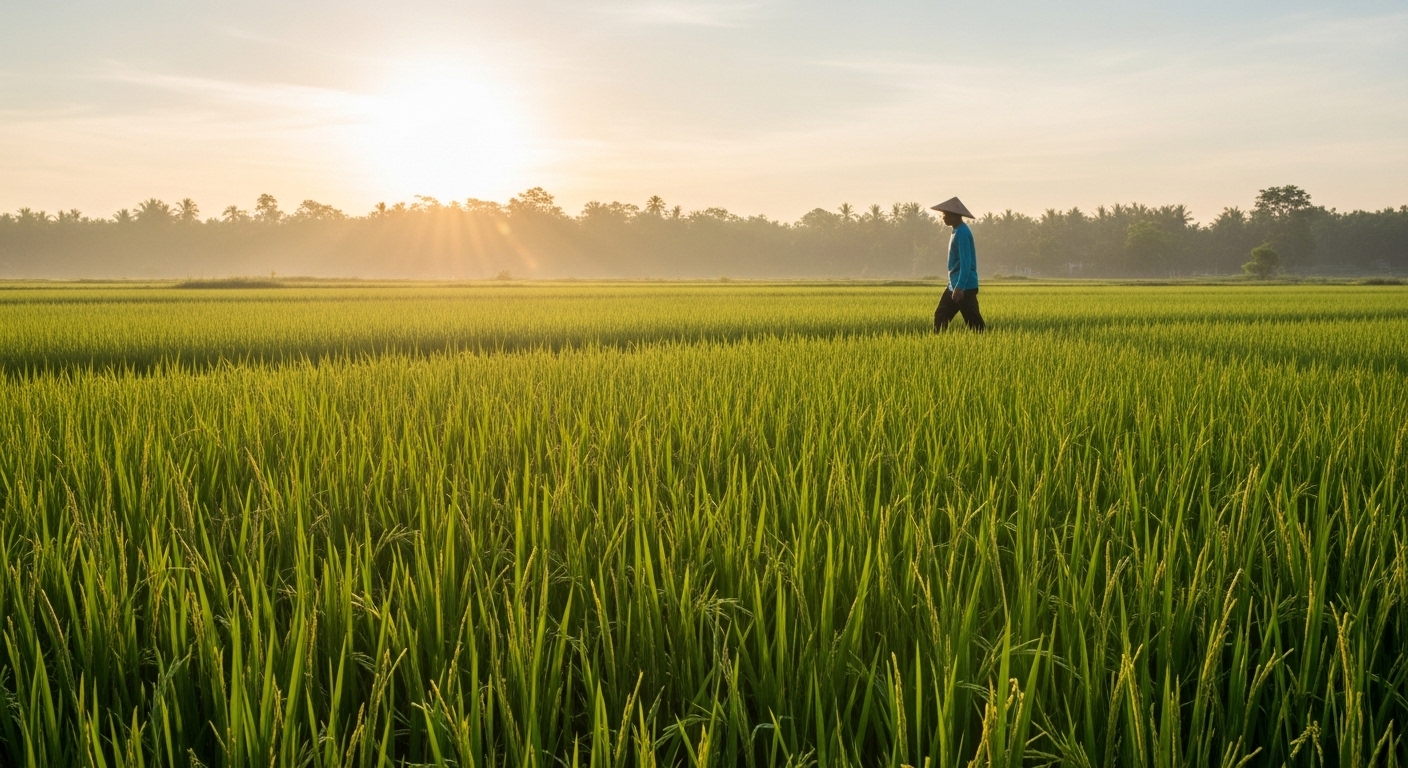
Tin Vinarice
14-6-2025
FAQs: Quality and Standards of Vietnamese Rice for Importers
For rice importers, particularly those in the Philippines, navigating the complexities of international trade involves more than just price negotiation. Understanding the quality benchmarks and export-import standards for Vietnamese rice is crucial for smooth operations, regulatory compliance, and ultimately, consumer trust.
Read
Tin Vinarice
13-6-2025
Why Sustainably Grown Rice is a Smart Choice for Philippine Businesses and Consumers
In an era of escalating climate change and heightened consumer environmental awareness, "sustainability" is no longer an option but an essential requirement across all sectors, especially agriculture. For the Philippines, a nation that is both a major producer and consumer of rice, transitioning to sustainably grown rice is not just a responsibility but a shrewd business strategy for enterprises and a conscious decision for consumers.
This article will explore the outstanding benefits of sustainably grown rice for both Philippine businesses and consumers, explaining why this is an irreversible trend.
Read
Tin Vinarice
12-6-2025
Optimizing Rice Import Costs: Key Considerations and Strategies for Effective Collaboration
In a dynamic global food market, optimizing rice import costs is a top priority for businesses, especially for importers in the Philippines—a nation heavily reliant on foreign rice supplies. Import costs are not merely the purchase price of goods; they represent a comprehensive sum of expenses, from sourcing to warehouse delivery.
This article delves into the primary factors influencing rice import costs and outlines effective collaboration strategies to help your business save money, boost profitability, and maintain a competitive edge.
Read
Tin Vinarice
12-6-2025
The Strategic Importance of Vietnamese Rice in Philippine Food Security: Analyzing Interdependence and Sustainable Partnership
In an increasingly complex geopolitical landscape and facing the ever-present challenges of climate change, food security remains a top priority for nations worldwide. For the Philippines, an archipelago with a growing population and significant challenges in domestic rice cultivation, ensuring a stable rice supply is a matter of national survival. In this critical context, Vietnam stands out as an indispensable strategic partner, playing a pivotal role in strengthening the Philippines' food security.
Read
Tin Vinarice
9-6-2025
The Secret to Perfect Vietnamese Rice: Cooking Specialty Grains Like a Pro
Unlock the secrets to cooking authentic, delicious Vietnamese rice. This guide covers essential tips, ratios, and techniques for transforming specialty grains into fluffy, fragrant perfection, every time.
Read
Tin Vinarice
9-6-2025
Vietnamese Rice: The Golden Food for Heart Health and Digestive Wellness
Discover why Vietnamese rice, from fragrant white to wholesome brown, is a powerhouse for your heart and digestive system. Learn about its unique nutritional profile and how it contributes to a healthy lifestyle.
Read
Tin Vinarice
9-6-2025
The Jewel of Vietnamese Soil: Discovering the Diversity and Superior Quality of Vietnamese Rice
Explore the rich world of Vietnamese rice, from fragrant jasmine to nutritious brown varieties. Learn about its diverse types, superior quality, and health benefits. Discover why Vietnamese rice is a global staple and a perfect choice for your kitchen.
Read
Tin Vinarice
7-6-2025
DS1 Vinarice: Winning Farmers' Hearts in Vietnam's Japanese Rice Capital – Hon Dat, Kien Giang
On April 9 and 11, 2025, the Vietnam Rice Company Limited (Vinarice) successfully organized a hands-on field visit for local farmers in Hon Dat, Kien Giang. Known as the "capital" of Japanese rice in the Mekong Delta, Hon Dat served as the ideal venue for introducing the DS1 rice variety – a Japanese rice strain with high productivity and strong adaptability.
Read
Tin Vinarice
7-6-2025
Vietnam Clean Rice – The 9-Step Journey to International-Standard Production
The clean rice production process not only ensures food safety and quality standards but also aims for sustainability in agriculture. So, what steps must producers follow to produce “clean” rice? Let’s explore through the article below.
Since ancient times, rice has been a staple in the daily lives of Vietnamese people, not only fulfilling nutritional needs but also carrying rich cultural value. As one of the world's top rice exporters, Vietnam consistently ensures the quality of its rice exports to various countries. For instance, rice exported to Japan must pass tests for over 500 chemical residues, while Taiwan requires testing for 300 different chemicals.
Read
Tin Vinarice
6-6-2025
The Untold Story Behind Vietnam’s Best Rice in the World: A North-South Genetic Love Story
From a rare purple-stemmed rice plant with long, beautiful grains found in the South, to the aromatic “green rice” genes of the North—ST25 rice is the remarkable result of decades of crossbreeding and dedication. It’s not just a grain, but a symbol of Vietnamese agricultural excellence recognized on the world stage.
Read

Vietnam Rice Co., Ltd
Truong Xuan Industrial Cluster, Truong Xuan Commune, Thap Muoi Dist., Dong Thap, Vietnam
Hotline: (84) 02776 518 888
Email: info@vinarice.vn









